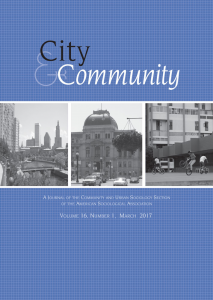Evolution of Crime Films
Crime films are arguably the most complex classification of movies that reflect our ideology of moral order and justice, lawful and illicit, desirable and unworthy. Crime films mirror society due to its interplay with the complexity of real live events that satisfy the audience’s desire for mayhem, underdog characters, and a fallible justice system. The critical alternative tradition, for the most part, focuses on this aspect of the film; while traditional movies tend to emphasize heroism and the restoration of moral order.
The earliest crime film may be traced to the silent epoch of 1897-1927, during the Progressive era in the United States. Social conditions that existed during this time, such as immigration and urbanization led to a proliferation of organized crimes, social anarchy, and distrust of the government. The alarming rate of crime and social disorder created a leeway for the emergence of crime movies, such as the Great Train Robbery, which Rafter (2006) believed may have been the first crime film. The prohibition code that was expected to restrict alcohol and other illicit acts had the reverse effect on the public. It created further rebellion for the law and produced an increased fascination for gangster films, such as Scar Face and Little Caesar, which portrayed outlaws as heroic figures that sought to gain economic status through illegal means. The fact that gangster films portrayed urban neighborhoods and criminality in a realistic fashion allowed the audience to better identify with the motivation and criminal lifestyle of the gangster. This in itself contributed to the endurance of the gangster genre even into the 21st century.
The prison genre also made an impact during the early 1930s with the onset of movies such as The Big House and I am a Fugitive from a Chain Gang. The stock prison films are usually centered on the convicts, a harsh warden, rebelliousness, and a young hero who tries to escape. It often provides one with the theme of hope versus despair. Stock prison films for the most part, are optimistic in tone as it appeals to the audience’s virtue of patience—which allows them to partake in the hardships and sufferings of the convicts, but also sustains the hope that freedom will soon be achieved. The Alternative tradition of prison films, however, tends to emphasize the brutalities of prison life. This genre feeds the audience’s appetite for daring films that do not justify the prison system, but instead demonstrate films in which innocence and morality is blurred. American Me, for example, portrayed explicit sodomy, gang related activities and drug trades. There was an increase of ethnic diversity among the characters in the film. Examples of such groups include the Hispanic community, the Aryan Brothers, and the Black Guerilla Family. Such diversity enables the audience of different ethnic groups in theU.S. to relate to the experiences of the characters. In contrast to traditional prison films, alternative tradition recognizes and accepts despair and provides no reform.
The prominence of the gangster and prison genre declined in the 1940s due to the infiltration of European techniques and style of expression that became embedded in American filmmaking. British born director, Alfred Hitchcock migrated to the U.S and brought with him highly expressionistic styles that were darker, had high shadows, and versatile camera angles. This new type of film became known as film noir. Hollywoodbegan borrowing noir traditions and incorporating them into American movies. The theme, characterization, and linear storytelling that were once emblematic of American films rapidly began to decline. Films now included a pessimistic outcome, complicated plots, and psychological motives derived from Freudian analysis that were prominent in Europe. The introduction of film noir led to the development of a femme fatale category that portrayed women as ruthless and conniving. The femme fatale category gave women more prominent roles in films, albeit still being sexually objectified. However, this change appealed to the audience as it not only created a new way of depicting gender roles but it also reflected the social changes occurring in the larger society. For example, America’s involvement in World War II led to a decline of males in the workforce. As a result, women took on the responsibility of providing for the household and held traditionally male dominated jobs. This period initiated the onset of women’s independence, and films such as Maltese Falcon and Rear Window started portraying the female character as witty, deceitful, and even treacherous—which is a reverse of the dedicated subservient housewife.
The film noir tradition, however, did not flourish indefinitely. During the 1950s to the 1970s, several new genres emerged that included the courtroom drama, police genre, slasher, and serial killer and psycho genre. This change in dimension evolved due to the advent of home television that cut into Hollywood profits; thus propelling Hollywood to respond by targeting the pop culture of the youth with new and brighter thrillers, better Technicolor and widescreen television. Serial killers, slashers, and psycho movies became the avenue through which Hollywoodcould reach a different and larger set of audience. The slasher genre emerged in the 1970s with the onset of movies such as Texas Chain Saw Massacre and Halloween. These films were primarily aimed at the younger audience and usually entail a teenaged protagonist, preferably a female who is hunted down by a dark, sadistic, male character. According to Rafter (2006), slashers are not true crime films as they are not concerned with crime and justice. Instead they are modeled after figures of folklore and myths. (p. 89). The imagery in the film is haunting to the viewer but at the same time intriguing as it keeps the suspense afloat. Other prominent features of the slasher films are the use of excess blood and gore and the fact that the villain kills repeatedly and does so in a violent manner. In Halloween for example, Michael, the antagonist of the film carries out violent acts on numerous occasions and kills out of anger and for mental relief. Images of dead bodies were displayed on the screen with blood stained victims and the weapon used to commit the murder. The slasher film genre targets teenaged audience specifically and speaks to the fears of increasing crime and dislocation.
Serial killer movies have far more cerebral-thinking characters than slasher movies. Serial killers have specialized victims and a consistent way of committing crimes. Furthermore, these movies emerged during a time when conservative criminal justice policies were dominant and society viewed criminals as inherently evil. There was a greater need for research and funding in investigating serial murderers. And to compound matters, criminologists and psychologists paid little attention to this pattern of behavior. However, serial killer movies grew in popularity due to the increase of actual serial killer cases nationwide and human interest in movies that are awry. The psycho films, though not a relatively new genre of the 70s had more pathological and dark characters. American Psycho, for example portrays a Wall Street executive, who kills out of disgust, jealousy, and anger. Patrick’s actions are eccentric and preposterous with deep seated psychological motives. He, like other psycho killers, has a set routine that he carries out dutifully. Furthermore, he is unfeeling towards his victims, egotistical, and highly manipulative–traits that are emblematic of serial killer characters.
During the 1990s, at a time when the public was concerned about increased crime and violence, the police subgenre emerged. The police subgenre, however, is not an original genre as it is rooted in detective films, amateur sleuth films, and films about private eyes. Nonetheless, for the most part, they were concerned with crime and the administration of justice. Rafter (2006) contends that the earliest police films did not survive as audience considered them boring and predictable. Furthermore, police had low status in American society and were considered brutal and corrupt. Events, such as the assassination of Martin Luther King Jr. and Malcolm X, in addition to civil war riots across the nation produced social turmoil during the 60s, and engendered increased police brutality. It is therefore no surprise that widespread distrust in law enforcement officers directly affected the way the public viewed the police subgenres.
Films such as Dirty Harry and Coogan’s Bluff changed the face of police films due to the fact that they emerged at time when public opinion was more accepting of the role of police officers. Both films emphasized the role of the ideal man who is fearful, heterosexual, independent, unemotional, and superhumanly powerful (Rafter 2006, p. 119). These films focus on the restoration of moral order and justice; which is achieved through the acts of powerful, tough, and vigilant cop heroes. Coogan’s Bluff and Dirty Harry reestablishes in the audience for an hour or two that law and order are of optimum importance to society and that it will always be there to protect civilians. The police genre did not essential fade; instead it expanded to include the postmodernist tradition that represents cops as helpless and unable to restore law and order and the critical alternative tradition that focuses on the brutality and corruption of police officers in which no hero exists. In the 20th and the 21st century, cop films have reached beyond the traditional role of the white hero cop to include diverse ethnic groups and heroic females.
Another genre of crime films includes the law film genre. Law films development can be traced to the 1930s during which traditional courtroom drama was widely popular in the United States. These films emphasized the nature of law and justice and focused extensively on the courtroom setting and the procedures of the judicial system. The traditional courtroom drama however declined due to the public’s disinterest in courtroom debates and disengaging justice figures. The law noir tradition of the 1940s portrayed justice figures as outsiders who try to fight an elusive and infallible justice system; one in which innocent persons may be wrongly prosecuted and the guilty may escape. For example, And Justice for All denotes the idea that the legal system can become invalidated and justice figures can indeed become outside forces that challenge the system within. Arthur, the main character in the movie, recognizes the corruption and failures of the criminal justice system and tries to work against its philosophy. However, while doing so he becomes an outcast in his own environment.
Crime films speak specifically to the American mass culture. It serves as a medium through which the unsavory and explicit desires of the public are met—whether it is the gangster genre that glorifies the hoodlum criminals or the police and law genres that seek to restore the moral order, the essential point is that these movies are a reflection of society that penetrates deeply into the conscience of man. It speaks theoretically, philosophically, politically, and historically to both nationwide and worldwide events, such as the Vietnam War or the Great Depression, which shaped public opinion of society. Crime film genres may be said to have a fascination for the literary imagination whenever social orders have been in flux and this idea has been expressed quite superbly through the various crime films of the 19th and 21st century.
Work Cited
Rafter, Nicole. (2006). Shots in the mirror: Crime films and society (2nd ed.).New York,NY: Oxford University Press, Inc.





